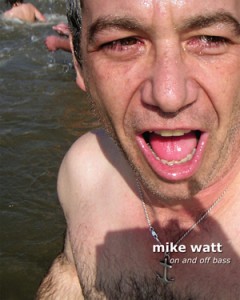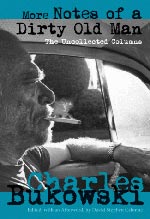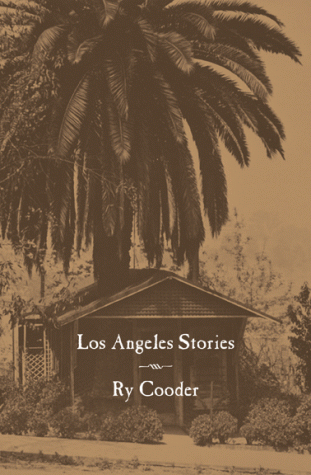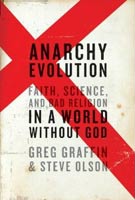Reviews, Concert Photography and other what-have-yous...
Friday, April 20, 2012
MIKE WATT: ON AND OFF BASS by Mike Watt
Looking west from the shores of Long Beach, California stands the tall cranes of the Port of Los Angeles, and just beyond them sits the small portside city of San Pedro. It was in this city that author Charles Bukowski spent his last years of his life. It’s a place where the films such as Chinatown and The Usual Suspects feature some of their most memorable scenes.
For the punk rock movement of the early 1980s, it’s also the birthplace of the Minutemen. Unfortunately, the band’s existence was cut short when front man and guitarist D. Boon died in a car accident after the band’s van ran off the road in Arizona in 1985. Band mate and fellow San Pedro native Mike Watt went on to form the group fIREHOSE, as well as play bass in the revamped version of The Stooges.
Along with his love for music, Watt also prides himself as being a native and resident of San Pedro (his internet radio show is appropriately titled The Watt From Pedro Show). What is not commonly known is that Mike Watt has a love and interest in photography, especially capturing the environment that surround San Pedro. All of these things are examined in his photographic memoir, Mike Watt : On and Off Bass.
When I think of memoirs, especially those of rock stars and musicians, I think of a book full of stories from the road –- insight on the drama of being in a band, and a look into their youth and growing up. Basically, a book full of pats on the back and self-gratifying praise for being so lucky to do what you love (hopefully) for a living. This book, however, is the furthest things from that.
In these 100 pages, the focus is mostly on Watt’s amazing photographic images of San Pedro, taken from on land as well as at sea (via kayak): early morning shots of the Port of Los Angeles featuring the heavy coastal fog being broken up by the rising sun. Pictures of pelicans, seals, and seagulls resting ashore or on buoys. Images of cargo ships, large cranes, and other industrial equipment clash against the reflection of the water and the clashing of the waves. Watt’s ability to capture both the natural and man-made aspects that make up the community and elements that make up San Pedro really shines through.
Along with these amazing pictures, Watt also gives the reader a chance to read some insightful glimpses into being on and off the road — the emphasis being on the word “glimpse.” The written passages are quite short and small in detail. We also are given a few poems written by Watt. The diary passes span throughout the 2000s, and feature stories about particular performances, encounters with fans, thoughts on life, and his love for John Coltrane.
Mike Watt : On and Off Bass gives you a real down-to-earth look at who he is. It’s a very minimalistic look back at his life, combining the things he cares deeply about: San Pedro, music, and photography. The book proves that you do not need to bash your fans over the head with anecdotes of how great your life has been — this simplistic approach makes for a refreshing and insightful read.
Thursday, February 9, 2012
MORE NOTES OF A DIRTY OLD MAN by Charles Bukowski
Let me start by saying that I’ve never read any of Charles Bukowski’s work before picking up this book. I remember I was quite young when I stumbled upon an audio clip of one of his poetry readings entitled “It’s Authorized,” and the visualizations provided by that piece that raced through my mind freaked me out.
My next encounter with Bukowski did not occur until about three years ago. I watched a clip from the film Supervan on the website Everything is Terrible and was intrigued by Bukowski’s cameo appearance. I started to read about his life and watch various clips of interviews and poetry readings. At 30 years old, I can now handle the subject matter much better than at 12.
When the opportunity to review More Notes of a Dirty Old Man arose, I jumped at it. I’ve been a fan of the “transgressive fiction” genre of literature for a while now, having read almost every novel released by Chuck Palahniuk, the extremely confusing (yet transfixing) Naked Lunch by William S. Burroughs, and the unapologetic work of Hunter S. Thompson. So to tackle some Bukowski seems like a natural next step.
With the authors mentioned above, their work seems to revolve around some kind of mind-altering substance in relation to their characters. Palahniuk focuses on characters who are addicted to — or, at the very least, fancy — pharmaceuticals. Burrough’s work was inspired by his own addictions to heroin, and Thompson was a madman who experimented heavily with all kinds of substances, and introduced such centralized themes in his stories and novels. But Bukowski’s material embraces the bottle and the down-and-out life of being a man…and a drunk. Rather than disavowing the disease, through his work and in his personal life, Bukowski celebrated it. His raw and unadulterated stories of life as a lowlife have become inspiration to many.
More Notes of a Dirty Old Man – assembled and edited by Bukowski aficionado David Stephen Calonne (who also provides the afterword) – is a collection of short stories, interviews, and columns by Bukowski that were published from the late ’60s into the mid ’80s, many of which originally appeared in The LA Free Press and Open City. The book has no real flow, which at times makes for some difficult reading — especially during some of the interview pieces.
With that being said, it is worth fighting through the slower material to reach some of the short stories. Many feature Bukowski himself as the main character, as he tells tales of being a traveling poet, finding himself in some very particular and unusual situations. Some of the most memorable stories deal with his relationship with women. Bukowski’s view of women has been frowned upon as being sexist and violent, and in some of these stories he lives up to those accusations. But one story in particular reads like a romance novel, as he tells a story about a woman who randomly shows up at his door. Revealing she’s a fan of his work, she wants to see the man who writes like the way he looks (“an undergrown aged gorilla dying of cancer”). They eventually screw in an extremely passionate way, but it’s the way he describes this woman and the details of her body that are so striking. I’ve got to admit, it turned me on.
In the course of this book, Bukowski tells stories of preaching the gospel of alcohol to a group stuck in the drunk tank, the life of being a boxing booking agent who ha fallen on hard times, and a boy who witnesses his demented and twisted dreams come alive. The highlight of the book comes in the form of his nonfictional-inspired fictional story about his encounters with two French men named Jean and Steve. The story, entitled “My Friend, The Gambler,” ends the book on a lighthearted note — no rough sex or drunkards throwing up to send you on your merry little way.
More Notes of a Dirty Old Man highlights some of Charles Bukowski’s forgotten work as a columnist for several publications in the later half of the 20th century. It’s a nice collection that really shows Bukowski’s love of telling stories filled with the grime and the filth of life as a normal working man in a concrete jungle. Some might pass his work by due to the stigma of the subject matter and how he brought it to life by his words (written and spoken), but to do so would be a huge injustice to the world of literature. Some may get it, some may not. But Bukowski’s mark on the world should not to be held in judgment. The man was as real as one can get.
Sunday, November 27, 2011
LOS ANGELES STORIES by Ry Cooder
I remember hearing Ry Cooder’s 2005 album Chavez Ravine after my old man burned me a copy of it and said I should check it out, especially after moving to southern California. The concept album tells the story of the Chicano community located just outside of downtown Los Angeles and the ultimate displacement of the residents of Chavez Ravine in order to develop new housing. The housing development plans fell through and the land was given to Walter O’Malley, the owner of the Brooklyn Dodgers, as part of an agreement to bring the Dodgers to LA. That forgotten history was brought to life with Cooder’s concept album — full of Chicano flavor built around Cooder’s guitar work, and Americana roots folk storytelling featuring many larger-than-life characters who were actually involved in the situation at Chavez Ravine.
In many ways, Los Angeles Stories is an extension of the story of Chavez Ravine and the people who inhabited the community. At the very least, it serves as an annex to the Chavez Ravine incident. This is Cooder’s first written work, a collection of short stories he penned over time, originally created for his own enjoyment. After a discussion with Bob Dylan regarding an upcoming tour Ry was heading out on, Cooder was convinced by Dylan to have a small run of these stories printed up to sell at each show. The tour fell through and somehow a copy of these stories — which were thrown together in a hurry — ended up in the hands of City Lights Books in San Francisco.
“I got an email saying, ‘We’d like to put out an edition of this,’ and I said that’s an honor for me – that’s terrific! Really? You sure?” said Cooder in a recent interview conducted on Los Angeles radio station KPCC 89.3 FM. “I’m not a novelist or writer in that sense. It’s just me fooling around, like with music in the same way. Like writing a song.”
The words that occupy the 232 pages of this book bring to life a time long gone. Los Angeles today is a busy and crowded metropolitan mecca, a true concrete jungle where millions of people work, live, and play among the smog-filled air and the bumper-to-bumper traffic. Los Angeles Stories gives us eight short stories set between the 1940s and late 1950s. During this time, LA was looked upon as a place for opportunity for those outside of the West Coast — A destination for folks back east. If it was a job working for Douglas Aircraft (a booming business with the progression of aviation technology) or getting into the music business you sought, LA was the place to be.
On the flip-side, Los Angeles also had a seedy side (and still does, if you care to look for it). Shady characters including schemers, lowlifes, junkies, and con-artists live among the dreamers, especially during the time period featured in Los Angeles Stories.
While some of the stories focus on those who end up in LA, Cooder’s focus in this book is mainly about those who have called LA home for most of their lives. The way Cooder describes the neighborhoods in LA — the homes and the working class — really paints a picture that doesn’t just give you an idea of what it was like; rather, he brings these images to life, especially if you live in or visit LA today. And if anyone can give accurate descriptions of what it was like in those days in Los Angeles, Cooder can since he grew up in these neighborhoods. I found myself saying “Been there!” many times while reading this book, as places like Pershing Square and Philippe’s still stand to this day.
I believe it was Stephen King who once said something like, “I don’t write about extraordinary people, I write about ordinary people in extraordinary situations.” That’s the formula Ry Cooder has used in this book. Most of the stories feature ordinary people — including quite a few musicians — who find themselves in very peculiar situations.
One line we keep hearing throughout this book is police officers telling characters, “Don’t leave town,” as one character after another gets caught up in some incriminating situations. The stories are full of suspense and read a lot like detective novels and pulp magazines (fitting for the era these stories take place). Another amusing thing about the stories is Cooder’s ability to occasionally cross characters from one story into another, giving the reader a feeling that while LA is a big place, it can also be a place where people get around. The cover also sets the stage for the stories found in this book. It features a classic California bungalow with a giant palm tree growing right through the roof, colored in an old film grain color, preparing the reader for a ride back in time.
Los Angeles Stories really captures the feel of LA in the ’40s and ’50s, or at least what I assume it was like. The stories, with a cast of larger than life characters and interesting plot twists, left me turning each page with wonder and interest in what was going to happen next. In the span of 232 pages, I feel like I’ve been to a museum or maybe jumped back in time to a place where I had no ability to be or exist in.
Ry Cooder has earned a reputation of being a wonderful musician with the ability to tell stories with his music. Now, Cooder has taken his storytelling to written form and will likely impress the reading community with his brand of true life-inspired tales of a time long gone. I hope this first time effort by Mr. Cooder won’t be his last. A truly excellent read.
Sunday, September 26, 2010
ANARCHY EVOLUTION: FAITH, SCIENCE, AND BAD RELIGION IN A WORLD WITHOUT GOD by Greg Graffin and Steve Olson
Anarchy Evolution explores what is at the root of the inquisitive mind of Dr. Graffin when it comes to the subject of evolutionism versus creationism. The study of evolutionism through the works of people like Charles Darwin fascinated Greg as a child and proved to be a driving force in his life as laid out in this book, and, of course, in the lyrics to Bad Religion’s music.
Anarchy Evolution reads like two books in one. Half of the book is written in an autobiographical sense as Graffin details growing up in Wisconsin, his family, moving out west to LA, and the events leading up to the founding of Bad Religion with Brett Gurewitz. The other half reads like a textbook, with detailed passages that feel like they came right out of his lecture series at UCLA (where he teaches evolution). He ties the personal and educational together by drawing examples of how certain parts of his life (especially his teenage years) echo the natural effects of anarchic evolution — hence the title of the book.
Graffin challenges almost every aspect of religious rule in this book, well beyond evolution. He challenges the claim of an eternal afterlife and spends a good deal of time talking about the falsehood of natural selection. He also tackles the issue of being an atheist. Graffin himself doesn’t really consider himself a so-called atheist, but really a “naturalist” — as in someone who believes solely that no supernatural entities were or are involved in creating what we know as the universe. His naturalist worldview is based upon “observation, experiment, and verification.” He spends a good deal of time in this book detailing many of his adventures observing nature and gathering evidence in collegiate field studies, including an amazing story about a trip to the Amazon while working at the Los Angeles County Museum of Natural History in 1987. This trip would change Greg’s life forever.
Much of Anarchy Evolution could be considered adequate reading material for an introduction into the history of evolutionary biology. After all, this was written by someone who teaches this material to students at UCLA. So some of this material might be already common knowledge, depending on your educational background. If you’re not up on the subject of evolutionary biology, don’t be surprised if you have to re-read passages as some of this information is quite deep in facts, names, and dates. Luckily, there are nearly 50 pages of cited notes in the back of the book.
For the Bad Religion fans out there, this book will also please your need for random stories about people and places involved in the creation of the band and the making of some of your favorite albums. So while you’re learning about why Greg Graffin was arrested in high school, you’ll also be learning about a certain type of ant that lives in the forests of central Mexico.
Anarchy Evolution is clearly a work of love by a man that loves his work. His views on religion don’t aim to offend, but rather to question the religious status quo. He simply refuses to believe in something that he can’t observe or investigate, as it goes against his naturalist worldview. He studied the evidence and came to the conclusion that there is no supernatural being issuing a hand of assistance (or dominance) in creating the world and universe as we know it today, tomorrow, and in the distant past. He invites you to question the answers and make up your own mind by doing your own investigating and observing. A very insightful and interesting read.



